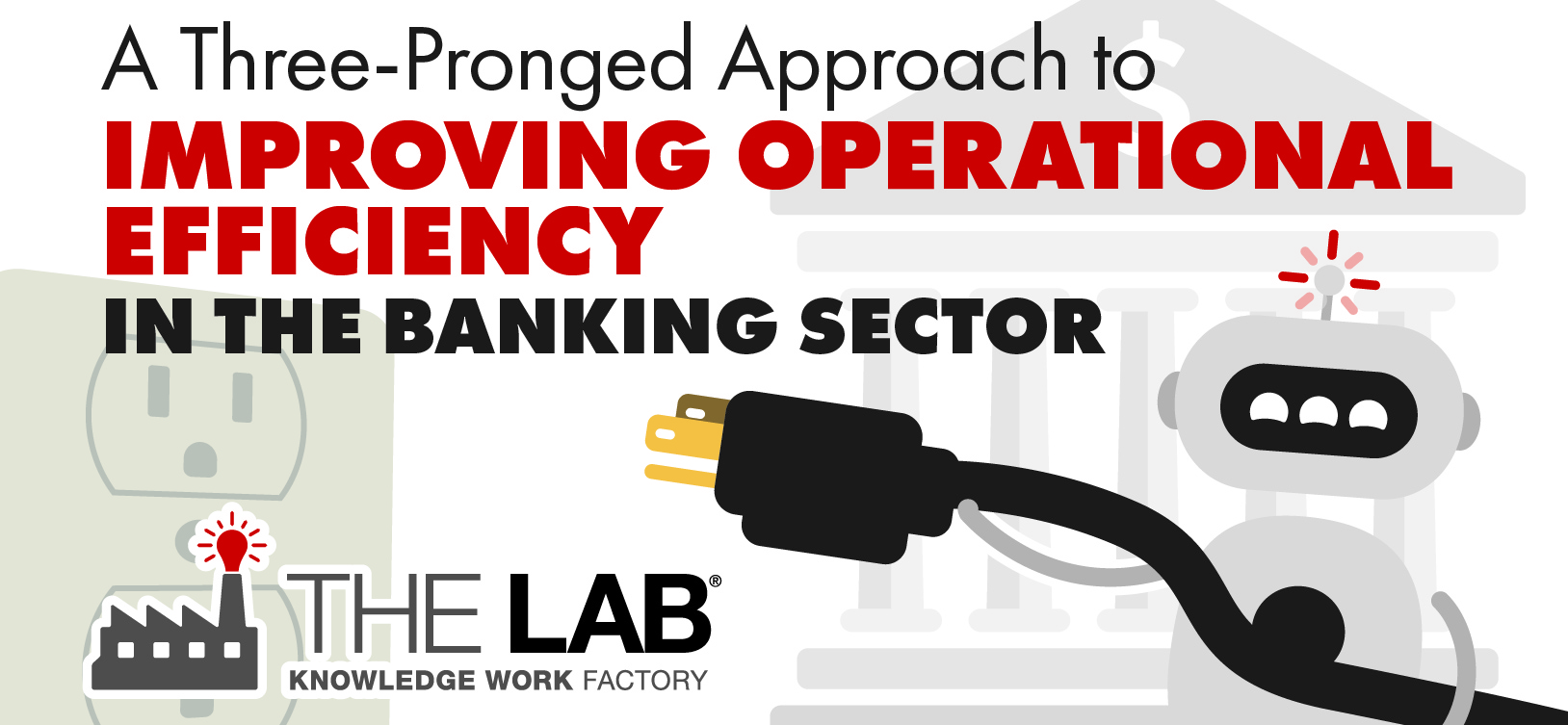If you’ve been following these articles, you’ll know that our last one was an in-depth case study which followed the trials of a well-known U.S. consumer bank. They’d grappled with cutting costs in their back-office operations. In this article, we’re going to take an under-appreciated approach to improving a bank’s productivity: tapping into the wasted power of its knowledge workers.
Improving operational efficiency: Banking sector insights
Knowledge workers—and the process-improvement opportunities they represent—can be found throughout any bank. They work in mortgage, compliance, underwriting, call centers, finance, marketing, and IT.
They’re the bank’s costliest workers. Yet the way they work has gone unchallenged for decades.
Why? Perhaps it’s because the topic has received scant scholarly attention. One exception occurred in 2009. It was a study of knowledge workers in England. It found that 35 percent of “experts and analysts” believed their skills were under-utilized. When it came to “servers and sellers,” the proportion leapt to 55 percent.
Research by The Lab Consulting confirms this. We’ve found that as much as 40 percent of knowledge workers’ capacity is wasted on avoidable rework, over-service, and needless low-value tasks. No wonder they feel under-utilized!
This isn’t just a slight to their egos. It’s an astonishing opportunity to boost operational efficiency in the banking sector.
Process improvement ideas in banking: Hiding in plain sight
To appreciate what’s overlooked, consider, by contrast, what is obsessively studied. Travel vouchers are monitored to the penny. Cash-drawer errors are tracked to two decimal places.
Yet virtually anyone in the organization can order a costly analysis from the Finance Department. New loan applications routinely arrive with a 30-percent error rate.
No one questions these issues. But they should.
All aspects of processing a product or service in the bank should be scrutinized—just as closely as those travel vouchers and teller drawers. Areas to review include:
- The customer contact center.
- The Finance Group.
- Compliance functions such as fraud and anti-money laundering.
But how do you uncover under-utilization?
A three-pronged approach to operational excellence in financial services
Here are the three ways to find what’s hiding in plain sight:
1. Employ an organization-based scope. Target one or more organizations. Map the business processes within them, and those that connect them.
2. Use a non-technology focus. Don’t get caught up on improvement that involves technology, capital investment, or strategic changes to products, services, or distribution channels. Those are far higher-hanging fruit.
3. Micro-target. Document work activities at the 10- to 15-minute duration level. Prepare to identify not dozens, but rather hundreds of small, activity-level improvements. They add up. A lot.
Leadership must actively sponsor this effort. Everyone should be exposed to the findings. Consensus is essential.
So is trust. The business’ most elite employees will need to bare all, in terms of their work activities. Therefore, sponsors must make it clear that it’s okay—indeed, imperative—to do so. They should insist upon measurable, meaningful results. They should also install new capacity models and performance measures. While knowledge workers may initially chafe at these changes, they’re essential to clear communication and ultimately operations efficiency in banking.
A timeframe is essential, too. Commit to six or eight months. Don’t fall prey to the “perpetual” initiative which fails to deliver meaningful results.
Improving operational efficiency in the banking sector pays off
In case you hadn’t noticed, a big component of this challenge is attitude adjustment. It’s about challenging longstanding assumptions. If bank management is willing to view past complacency as a business opportunity, the payoff in newfound operational efficiency in banking can be huge.
Inefficiencies are not simply “the cost of doing business.” Senior executives who sponsor these types of efficiency initiatives can expect to:
- Reduce the number of administrative sales tasks.
- Shorten end-to-end service cycles.
- Streamline task sequencing.
- Standardize tech workarounds.
In turn, the benefits are more than worth the effort. They can include:
- Reduced operating costs.
- Increased sales uptime.
- Annual savings in the tens of millions of dollars.
- A break-even point in a matter of months.
- Tenfold ROI.
We think you’ll find The Lab’s value proposition compelling and irresistible: it includes a unique self-funding engagement model and money-back guarantee. Learn more about it here.
For 2021: We have updated our bank client offering. Much of these findings and implementation results can be reviewed in the 3-part-series of “Big Rocks for Banks” below. Find out how to strategically lower costs, increase operating leverage, improve customer experience, and automate what previously wasn’t automatable in your bank.
Find them all here:




















